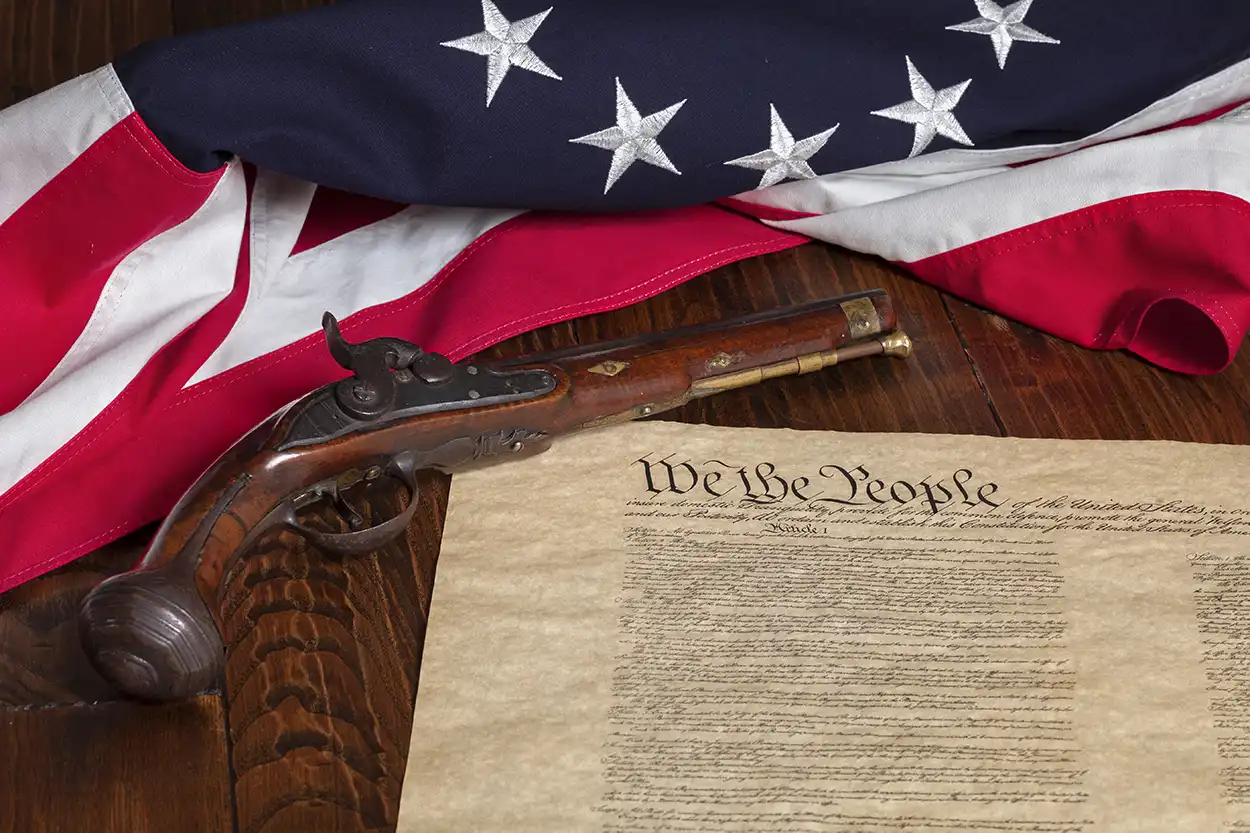
08 Mar Defining and Understanding the Second Amendment
The Second Amendment to the United States Constitution has become a hot button topic in American politics. It guarantees the right to bear arms, and the interpretation of what this means has been the subject of debate for centuries. However, to have an informed opinion on the matter, it’s necessary to have a clear understanding of what the Second Amendment actually says and what it means in the context of today’s society.
What is the Second Amendment?
The Second Amendment was added to the Constitution in 1791 as part of the Bill of Rights. The Second Amendment states, “A well-regulated militia, being necessary to the security of a free state, the right of the people to keep and bear arms, shall not be infringed.” The Founding Fathers believed that a well-regulated militia was necessary to protect the nation from foreign and domestic threats, and they wanted to ensure that citizens could defend themselves if need be.
Today, the interpretation of the Second Amendment is still a highly contentious issue. While some argue that it guarantees individuals the right to own firearms, others believe it only applies to state-regulated militias, such as the National Guard. The Supreme Court has weighed in on the matter several times, ruling that the Second Amendment protects an individual’s right to own firearms.
While the Supreme Court has ruled that the Second Amendment does protect an individual’s right to bear arms, it has also ruled that the government can impose reasonable restrictions on this right. These restrictions can include background checks, waiting periods, and age limits. This interpretation has been challenged in more recent years, with staunch supporters of the Second Amendment arguing that the Second Amendment should be interpreted more broadly to allow for less restrictive laws.
A Look Into Second Amendment Court Cases
District of Columbia v. Heller (2008)
The ruling in District of Columbia v. Heller was a significant victory for gun rights advocates, as it established that the Second Amendment protected an individual’s right to bear arms. However, it also opened the door for further litigation in Second Amendment cases, since the Court did not specify what types of firearms or restrictions on guns were permissible under the Second Amendment. As a result of this ruling, Second Amendment litigation has become increasingly common, with various states and municipalities enacting multiple regulations and restrictions on firearms.
McDonald v. Chicago (2010)
McDonald v. Chicago was a landmark Supreme Court case that took place in 2010, and it is considered to be one of the most significant Second Amendment court cases in U.S. history. The case was brought by Otis McDonald, a 76-year-old Chicago resident who was seeking to challenge the city’s handgun ban, which had been in place since 1982. The Supreme Court ultimately ruled in favor of McDonald, holding that the Second Amendment right to keep and bear arms applies to the states via the Fourteenth Amendment.
The Bottom Line: The Importance of Understanding the Second Amendment
Ultimately, the importance of understanding the Second Amendment cannot be overstated. Many believe, as do we, that founders knew that to protect all freedoms you need a check on governmental power. The Second Amendment is a key part of the Bill of Rights and has the potential to shape the legal landscape for many years to come. With all of this in mind, it is vital for citizens to understand their rights under the Second Amendment and be aware of the potential implications of its interpretation.
Historical context: Why didn’t the Japanese invade the mainland Pacific Coast after Pearl Harbor? Could it have been because of our armed citizenry? They said that was the reason.
ASF Question: Which side of the debate do you fall on and why? Leave a comment below!
We invite you to join us in our mission to preserve and promote American values of liberty, freedom, equality, and personal responsibility. Through our blog, we hope to educate and inform our readers about the US Constitution and the Bill of Rights, and we hope to inspire them to become advocates for their rights and freedoms.
